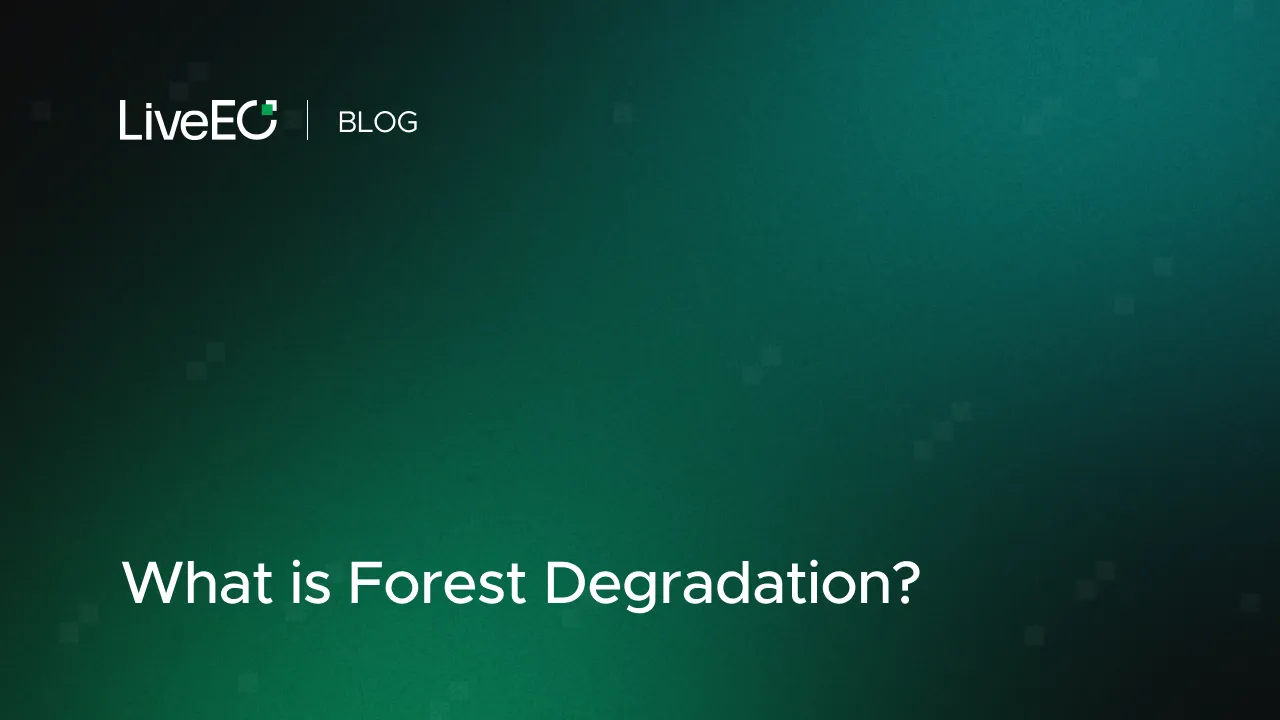
When it comes to environmental conservation, the terms deforestation and forest degradation often come up. While these concepts are interrelated, they refer to distinct ecological challenges.
In this article, we dissect the concept of forest degradation, explore its causes, and the steps under the European Union Deforestation Regulation (EUDR) to mitigate its impact. Our focus keywords are "forest degradation definition geography" and "what is forest degradation."
Key Takeaways
What is forest degradation?
This is a question that often arises in environmental discussions.
In simple terms, forest degradation corresponds to a reduction in the capacity of a forest to provide goods and services.
Essentially, this involves the loss of the biological or economic resources in a forest due to human activities or natural disasters.
From a geographical perspective, forest degradation is a globally pervasive problem impacting various forest ecosystems, from tropical rainforests in the Amazon to the Siberian boreal forest.
The severity and type of degradation often vary in respect to geographical location, forest type, and the specifics of human activities in the area.
Read also: EUDR vs EUTR: Differences and Similarities in EU's Timber Regulations
Causes of Forest Degradation
Multiple factors contribute to forest degradation.Discussed below are some of the significant causes:
- Illegal Logging and Overexploitation: Uncontrolled logging for timber, firewood, and charcoal are major contributors.
- Agricultural Expansion: The clearing of forests for the cultivation of cash crops like soy, palm oil, coffee, and cocoa or for cattle rearing contributes significantly to forest degradation.
- Mining and Infrastructure Development: Mining activities and infrastructure development lead to the felling of trees, causing degradation.
- Climate Change: Warmer temperatures, altered rainfall patterns, and increased frequency of extreme weather events are contributing to forest degradation around the globe.
Forest Degradation and the European Union Deforestation Regulation (EUDR)
The EUDR, recognizing the vital ecological role played by forests, has undertaken measures to mitigate forest degradation.
This regulation targets products associated with deforestation and forest degradation, covering cultures like cattle, cocoa, coffee, palm oil, rubber, soy, and wood.
{{inline}}
The EUDR mandates operators to conduct due diligence, which includes:
- Establishing risk assessment systems to trace product origins, ensuring a deforestation-free production.
- Verification of compliance with local laws where the commodities are produced.
- Commitment to fair trading, acknowledging the social dimensions of deforestation and forest degradation.
Moreover, advanced geospatial analytics platforms, like LiveEO, are altering forms of compliance with regulations like EUDR.
Leveraging Earth Observation technology and machine learning, these platforms fetch geolocation data and efficiently monitor land-use changes, helping businesses stay compliant with EUDR.
LiveEO's compliance solution for EUDR automatically detects forest degradation with high accuracy and provides the compliance status on both individual plot level and supplier level, in an easy-to-user interface.
Conclusion
Understanding forest degradation and its causes is essential in crafting meaningful environmental policies and regulations.
Effective mitigation efforts like those implemented by EUDR can reduce the impacts of forest degradation, preserving our planet's precious ecosystems. Businesses, by integrating advanced geospatial analytics platforms, can ensure regulatory compliance and participate actively in combating forest degradation.
As aware individuals, understanding what is forest degradation helps us make environmentally conscious choices, contributing to global sustainability.
After discovering what causes forest degradation, retrace the road to EUDR's establishment.









